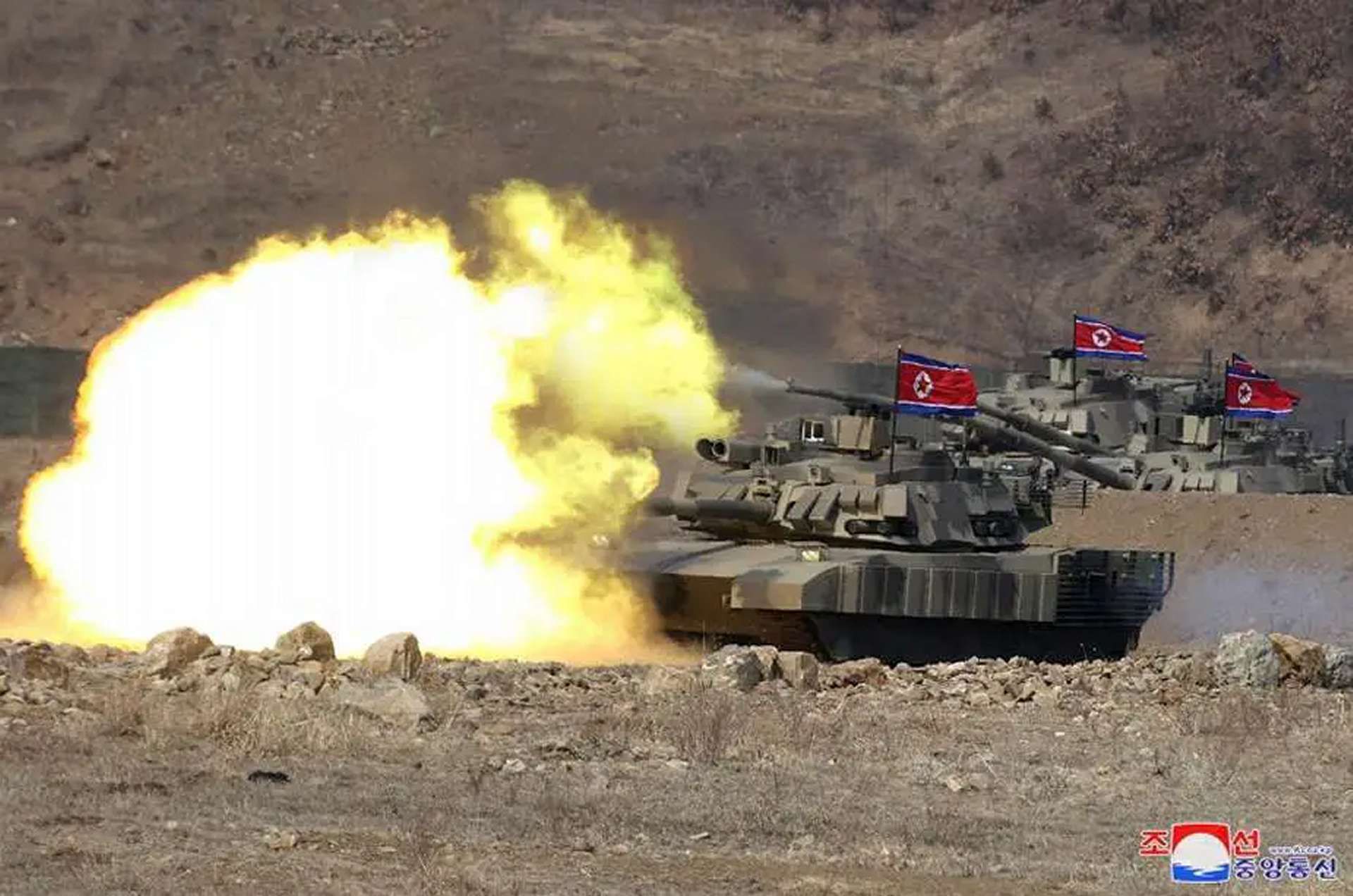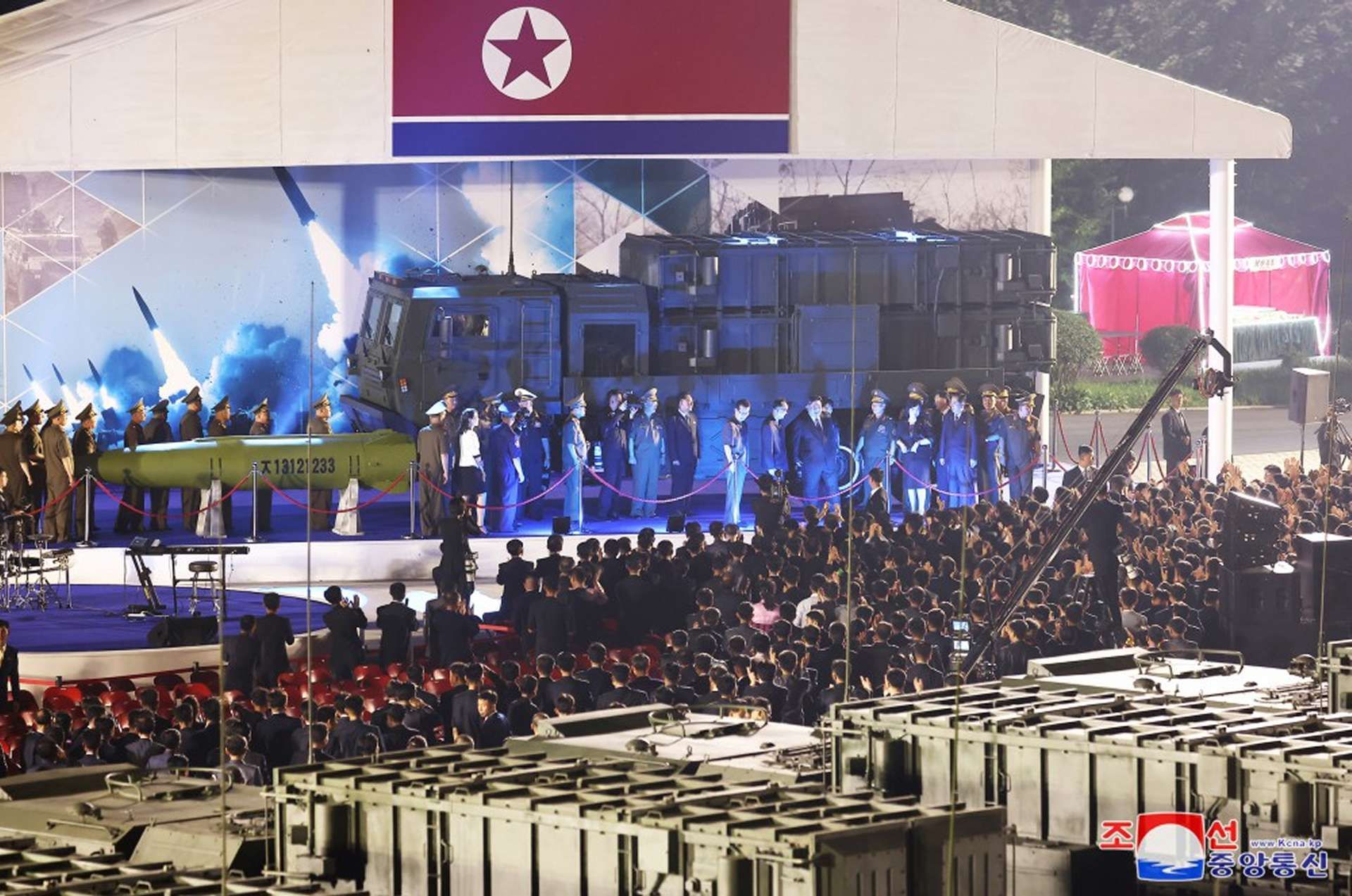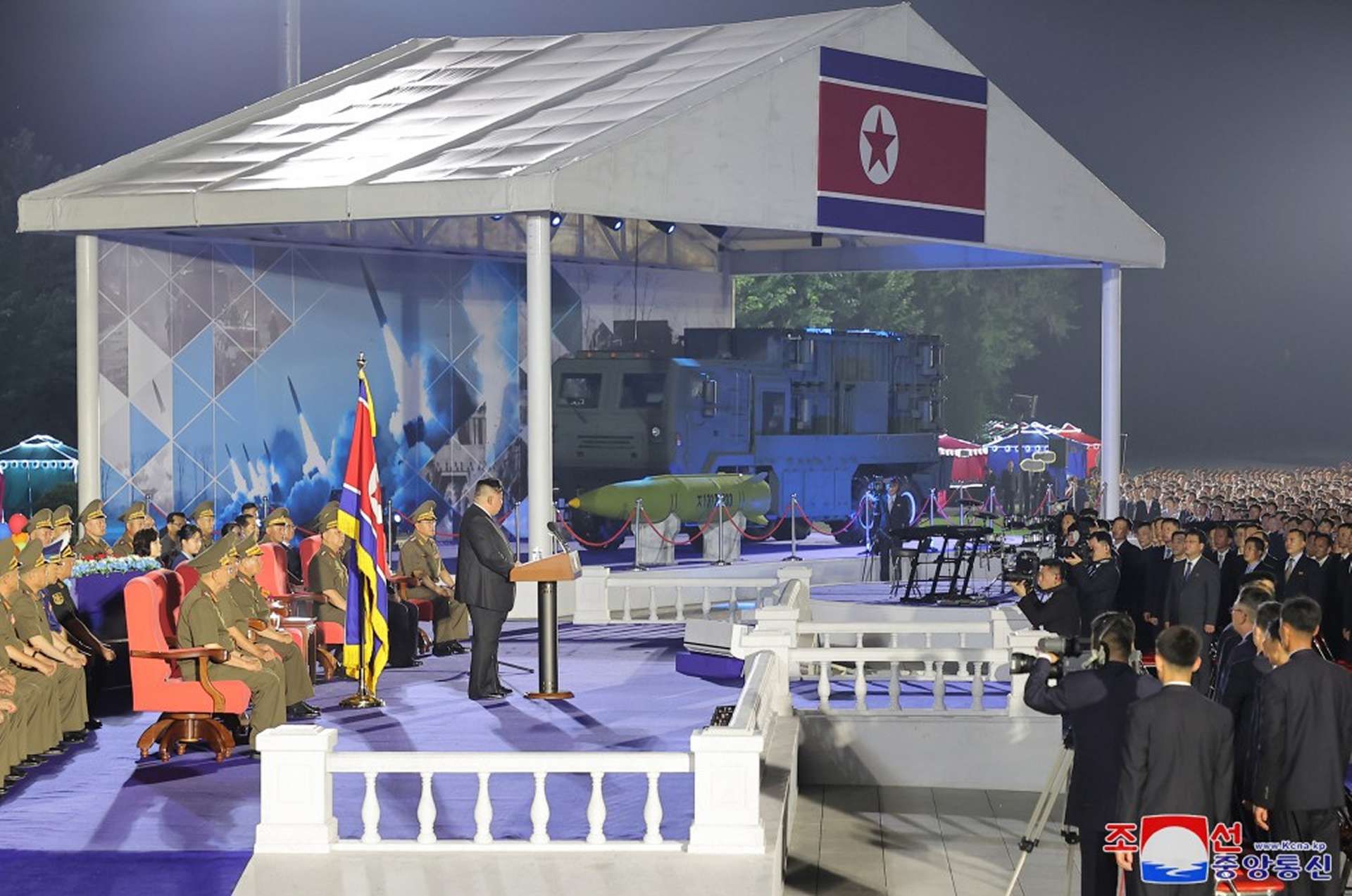Breaking News
North Korea deploys 1,000 Hwasong-11D ballistic missiles against South Korea.
On August 4, 2024, North Korea announced the deployment of 250 Hwasong-11D ballistic missile launchers to its southern border, marking the first time the country has publicly disclosed such a large-scale transfer of arms to its border units. Each launcher is designed to hold four short-range ballistic missiles capable of carrying 4.5-ton warheads at a range of up to 180 km, for a total of 1,000 missiles. This unveiling comes amid deteriorating relations with both South Korea and the United States, while North Korea's relationships with Russia and Hamas have grown closer, with multiple confirmed arms deliveries.
Follow Army Recognition on Google News at this link

North Korea announced the deployment of 250 Hwasong-11D ballistic missile launchers to its southern border, marking the first time the country has publicly disclosed such a large-scale transfer of arms to its border units. (Picture source: KCNA)
This deployment marks the first time North Korea has publicly disclosed such a large-scale transfer of arms to its border units. According to Han Kwon-hee of the Korea Association of Defence Industry Studies, each launcher is designed to hold four missiles. Han speculated that North Korea's arms supply to Moscow might have impacted its ability to produce a total of 1,000 missiles.
Kim's speech at the ceremony addressed the shifting global strategic landscape, emphasizing the need for North Korea to bolster its war deterrence in response to the transformation of US-led alliances into nuclear-based military blocs. Photos released by KCNA depicted rows of missile launchers with banners proclaiming, "Let’s open the golden age of defense industry development under the leadership of the great comrade Kim!" Hong Min, a senior analyst at the Korea Institute for National Unification, noted that the production and display of such a large number of missile launchers indicate the event had been planned months in advance. The scale of the production required considerable manpower and resources, suggesting a well-coordinated effort.
Among the attendees at the ceremony was Kim's teenage daughter, Ju Ae, who has been reported by Seoul's spy agency as being groomed as Kim's heir. She was seen clapping behind her father in one of the photos. Kim claimed the new weapon systems were designed under his guidance, though experts believe they likely involved modified foreign technology.

Since January 2024, North Korea has introduced several new weapon systems, such as a new 240mm multiple rocket launcher system in February and the Cheonma-2 main battle tank, an upgraded version of the M2020 model, in March. (Picture source: KCNA)
The relationship between North Korea and South Korea has sharply deteriorated since the start of this year, and is currently at a historic low. Kim Jong Un has increased weapons testing and has been sending balloons filled with trash across the border. In response, South Korea has resumed propaganda broadcasts, suspended a military agreement aimed at reducing tensions, and restarted live-fire drills near the border.
For instance, Pyongyang has labeled South Korea as its “principal enemy,” disbanded agencies dedicated to reunification and outreach, and threatened war over even minimal territorial infringements, which led to aggressive military drills, including the launch of approximately 200 artillery shells into disputed waters, which South Korea responded to with a larger artillery barrage. Additionally, since January 2024, North Korea has introduced several new weapon systems, such as a new 240mm multiple rocket launcher system in February and the Cheonma-2 main battle tank, an upgraded version of the M2020 model, in March. Finally, North Korea's termination of the 2018 Comprehensive Military Agreement has further exacerbated the situation, nullifying longstanding security frameworks and pushing the peninsula closer to the brink of conflict.
As of August 2024, the relationship between North Korea and the United States remains highly adversarial, characterized by mutual distrust and military posturing. Kim Jong Un has been vocal about preparing for potential conflict with the U.S., citing perceived threats from the U.S. military presence in South Korea and broader regional strategies. Despite past diplomatic efforts, recent years have seen a return to a more confrontational stance from Pyongyang, including increased missile tests, anti-American rallies, and public declarations of readiness to use nuclear weapons if necessary. In response, the United States continues to emphasize a policy of deterrence and defense, maintaining strong military alliances with South Korea and Japan will several joint military exercises aimed at deterring North Korean threats.

The Hwasong-11D, first tested publicly in May 2024 under Kim Jong Un's supervision, is an upgraded version of the KN-23, which had multiple successful tests since its debut in 2018. This missile has an operational range between 100 and 180 kilometers and can carry a substantial 4.5-ton warhead, making it capable of high-impact strikes against fortified positions or critical infrastructure. (Picture source: KCNA)
North Korea's relationship with Russia has grown closer, particularly in light of shared strategic interests and opposition to U.S. influence in the region. This relationship has been strengthened through the recent signing of a comprehensive strategic partnership, which includes a mutual defense treaty that commits both nations to support each other if attacked by a third party. This development comes in the context of North Korea supplying munitions to Russia for its war in Ukraine, with Russia reciprocating by providing economic and military aid to North Korea.
The partnership also includes cooperation in advanced military technologies, potentially aiding North Korea's nuclear and missile programs, as well as the potential conversion of a Russian aircraft into an Airborne Early Warning and Control (AEW&C). This alliance has raised concerns among Western countries, particularly South Korea, the United States, and Japan, about the increased military capabilities of both nations and the potential for escalated conflicts in the region.
North Korea's relations with non-state actors like Hamas, while less publicized, have also been a point of international concern. Reports indicate that North Korea has provided various forms of support to Hamas, including arms transfers and military training. This support aligns with North Korea's broader strategy of engaging with groups and states that oppose U.S. and Israeli policies. Such relationships complicate the international security landscape and underscore North Korea's role in global arms proliferation. Overall, North Korea's geopolitical maneuvers reflect its strategic objectives of enhancing military capabilities and leveraging alliances to counterbalance Western influence.

Kim has emphasized the need for a continuous expansion of North Korea's nuclear program to counter perceived South Korean and US threats, authorizing preemptive nuclear strikes if the leadership feels threatened. (Picture source: KCNA)
Therefore, the 250 Hwasong-11D missile launchers delivered to frontline units are described by North Korea as nuclear-capable. Kim has emphasized the need for a continuous expansion of North Korea's nuclear program to counter perceived South Korean and US threats, authorizing preemptive nuclear strikes if the leadership feels threatened. The KN-24 Hwasongpo-11 systems have a range of about 210 km, sufficient to reach Seoul, despite being cheaper and having a shorter range than the KN-23 missiles. Jo Chun Ryong, Secretary of the Central Committee of the Workers' Party of Korea, reported that the special order for new ballistic missile production had been completed. Kim Jong Un expressed gratitude to the military industry workers, calling the upgrade and replenishment of the missile arsenal a historic event crucial for national defense.
The Hwasong-11D, first tested publicly in May 2024 under Kim Jong Un's supervision, is an upgraded version of the KN-23, which had multiple successful tests since its debut in 2018. This missile has an operational range between 100 and 180 kilometers and can carry a substantial 4.5-ton warhead, making it capable of high-impact strikes against fortified positions or critical infrastructure. The Hwasong-11D features an autonomous navigation system that enhances its precision by allowing mid-flight adjustments, making it harder to intercept. Its quasi-ballistic trajectory further complicates interception efforts. Designed for mobile launch platforms, the Hwasong-11D increases its survivability and deployment flexibility, capable of being launched from various platforms, including modified railcars and road-mobile launchers.
Kim's speech during this delivery highlighted significant strategic and structural changes in the military security environment surrounding North Korea, driven by the US-led alliances' shift to nuclear capabilities. He reiterated that true peace is secured by a strong force, and North Korea's defensive capabilities must continue to evolve. He criticized the US and its allies for escalating military tensions and stated that North Korea's military expansion is essential for ensuring its sovereignty and security. Satellite imagery confirmed the setup of hundreds of missile launchers at the Mirim military parade training complex between August 3 and 4. Kim stated that the new weapon systems would enhance North Korea's ability to respond to any threats and serve as a powerful deterrent. He declared that the ongoing development of military capabilities is vital for the nation's security and prosperity.


























